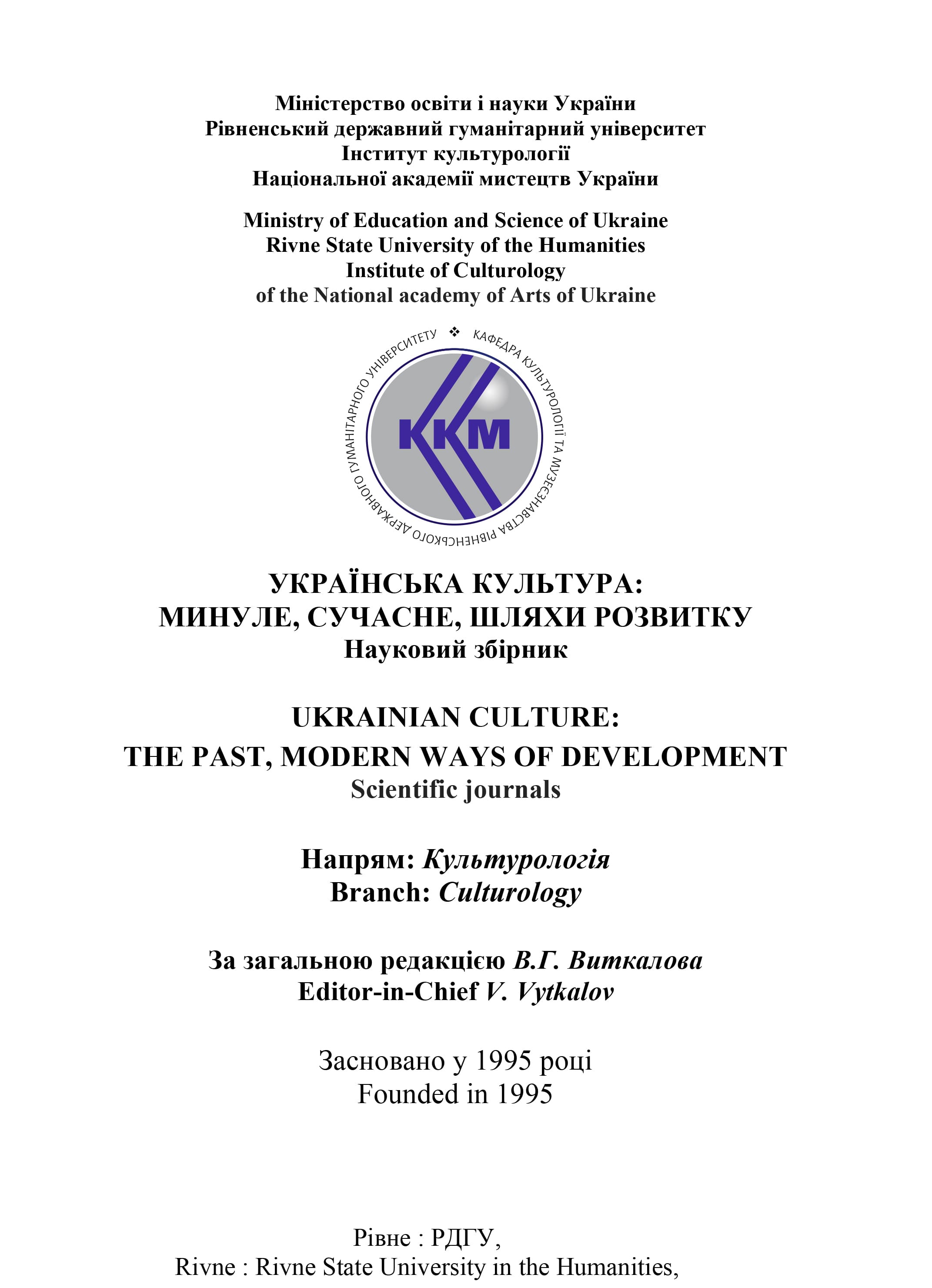THE USE OF SYMBOLIC SIGNS IN MODERN UKRAINIAN MONUMENTAL CHURCH PAINTING: CLASSIFICATION, HIDDEN SEMANTICS
DOI:
https://doi.org/10.35619/ucpmk.v39i.499Keywords:
iconography, painting of Orthodox Church, Orthodox Church, semiotic signs in modern iconography, classification of symbols in painting of Orthodox Church.Abstract
Monumental church paintings are often perceived either as the interior decoration of the temple or as the «Gospel for the illiterate», as the temple painting often contains scenes from Holy Scripture. In science the painting of the Orthodox Church is mainly the subject of study of art critics, but from the point of view of culturology and semiotics, it is insufficiently studied. The symbolism of monumental church painting is insufficiently revealed.
The author of the article offers her own classification of symbols of monumental church painting, using examples from the murals of modern Orthodox churches in Eastern Ukraine, mainly from the Donetsk region. According to the author, all symbolic signs of modern Ukrainian monumental church painting can be divided into the following types: personified, liturgical, apocalyptic, mystical, decorative, abstract-spiritualistic, landscape and symbolic elements. The analysis of semiotic signs in monumental church painting contributes to a more detailed «reading» of the painting of an Orthodox church, revealing the hidden semantics of iconographic subjects, and a deeper understanding of the Eastern Christian worldview.
The aim is to give a description of symbolic signs, to classify them, to give examples for each type of signs from the paintings of modern temples of Eastern Ukraine, on the basis of semiotic analysis of iconographic plots used in monumental church painting.
During the research, the following methods were used: the method of collecting empirical material (photographs of murals of modern churches in Eastern Ukraine), visual-analytical, iconographic and semiotic methods were used to search for symbolic signs in temple paintings, descriptive was used to describe iconographic plots and images of symbolic signs, the method of systematization and data processing was used to compile the classification of symbols found in the list of Orthodox churches, culturological and semiotic methods were used to reveal the possible meanings of the symbols, which contributes to the «reading» of the painting of the temple as a cultural text.
Conclusion. Despite the fact that most of the images in the paintings of the Orthodox Church are iconic signs, in the monumental church painting symbolic signs have a special place.
Iconographic symbols are signs with a hidden motivation, occupying a marginal position in the class of conventional signs, ie the same bearer can be considered as an index and as a symbol. Symbolic signs of modern Ukrainian monumental church painting can be divided into the following types: personified, liturgical, apocalyptic, mystical, decorative, abstract-spiritualistic, landscape and symbolic elements.
The reason for the appearance of a symbolic sign may be a metaphorical image from the text of Scripture or from a liturgical text (for example, from an akathist).
Decorative and landscape symbols are less sacred than, for example, liturgical, abstract-spiritualistic or apocalyptic. The inclusion of a symbol in a new context can change the semantics of the iconographic plot. Depending on the context, the same symbol can be interpreted differently, for example, as personified, liturgical or decorative (vine).




